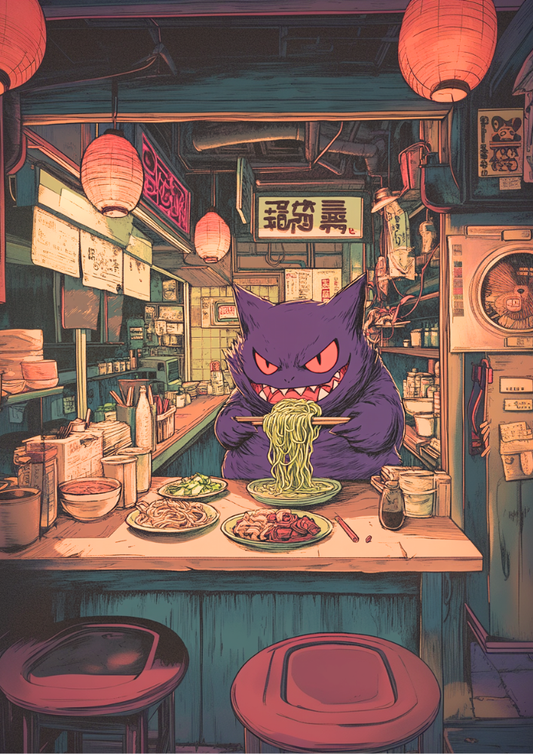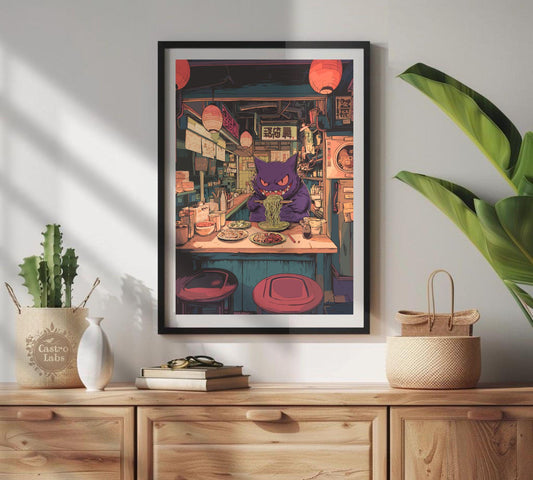
The Brilliance of Hideo Kojima’s Art
Share
Few names in the gaming industry evoke as much reverence, curiosity, and debate as Hideo Kojima. To call him a game developer would be too narrow, too reductive. Kojima is an auteur in the truest sense, a visionary who treats video games not simply as entertainment, but as a medium of art, capable of cinematic depth, philosophical weight, and emotional resonance.
Across decades of work, from the stealth-driven intrigue of Metal Gear Solid to the haunting landscapes of Death Stranding, Kojima has consistently pushed boundaries. His games are not just played; they are experienced, felt, and remembered. They invite players to reflect on existence, morality, connection, and even mortality — themes rarely explored in mainstream gaming.
So what makes Kojima’s artistry so distinctive? Let’s explore the core elements that define the brilliance of his work.
1. Cinematic and Narrative Depth
From the beginning, Kojima approached video games with a cinematic lens. His love of film is no secret, he often cites directors like Stanley Kubrick, Ridley Scott, and Andrei Tarkovsky as inspirations.
In games like Metal Gear Solid and Death Stranding, he integrates film-like storytelling techniques:
-
Complex characters with rich psychological depth.
-
Intricate plots layered with politics, espionage, and philosophical questions.
-
Cinematic direction, complete with carefully framed shots, pacing, and dramatic timing.
Take Metal Gear Solid, for example. Released in 1998, it was a revelation: a video game that felt like a Hollywood thriller, complete with long cutscenes, dialogue-heavy sequences, and an emotional undercurrent that made players care about its characters. Players weren’t just sneaking past guards; they were grappling with nuclear politics, genetic engineering, and questions of identity.
With Death Stranding (2019), Kojima went even further, crafting a story about isolation, connection, and the fragility of human bonds. It blurred the line between cinema and interactive media, making players participants in a narrative as layered and thought-provoking as any film.
Kojima’s brilliance lies in his belief that games can tell stories with the same power as films, but in uniquely interactive ways.
2. Visual Style and Atmosphere
Kojima’s games are instantly recognizable thanks to their distinct visual style, shaped heavily by the art of Yoji Shinkawa, his long-time collaborator.
Shinkawa’s character designs, fluid lines, bold brushstrokes, and striking silhouettes — are works of art in themselves. Combined with Kojima’s direction, the games achieve a visual identity that balances realism with stylization.
Atmosphere is everything in Kojima’s worlds:
-
Neo-noir tones: heavy use of shadows and moody lighting.
-
Cyberpunk influences: dystopian futures, high-tech gear, and morally ambiguous societies.
-
Japanese aesthetics: the subtle presence of Mono no Aware, the beauty of impermanence, often seen in fleeting landscapes, crumbling structures, or fleeting character arcs.
In Metal Gear Solid 2, surreal sequences blurred the line between reality and simulation, reflecting the chaos of the digital age. In Death Stranding, empty vistas of ruined America are both terrifying and beautiful, embodying loneliness yet offering moments of serenity.
Kojima doesn’t just build levels; he builds atmospheres that feel alive with symbolism.
3. Philosophical and Conceptual Themes
What separates Kojima from most game designers is his willingness to tackle big, existential questions.
-
In Metal Gear Solid, themes of nuclear proliferation, identity, and free will take center stage.
-
In Metal Gear Solid 2, Kojima anticipated the age of information overload, memes, and digital manipulation nearly two decades before it became our reality.
-
Death Stranding explores loneliness, connection, and the fragility of humanity in the face of extinction.
His narratives often delve into time, existence, fate, and human connection, questions philosophers have wrestled with for centuries.
By embedding these themes in gameplay and story, Kojima elevates video games into conceptual art. He doesn’t just entertain; he makes players reflect on society, technology, and themselves.
4. Breaking Conventional Boundaries
Kojima has always thrived on breaking rules.
He embraces magical realism, combining hyper-detailed worlds with surreal or supernatural elements. This creates experiences that feel unpredictable, yet deeply immersive.
-
A ninja who deflects bullets with a sword (Metal Gear Solid).
-
A psychic boss who reads your memory card and reacts (Metal Gear Solid’s Psycho Mantis).
-
Ghostly apparitions haunting lonely landscapes (Death Stranding).
These moments deliberately defy traditional design, creating unforgettable experiences. They may confuse, shock, or even frustrate players, but they always push the boundaries of what games can be.
5. Innovative Gameplay Integration
For Kojima, gameplay isn’t just mechanics; it’s an extension of his themes.
-
In Metal Gear, stealth gameplay reinforced the tension of espionage and vulnerability.
-
In Death Stranding, the core mechanic of delivering packages symbolized the fragility and importance of human connection. Every bridge built by one player could aid another — gameplay and theme intertwined seamlessly.
-
His games often force moral ambiguity: should you kill or sneak past? Obey orders or question authority?
By innovating how gameplay serves narrative, Kojima transforms interaction into avant-garde art.
6. Cultural Synthesis
Part of Kojima’s brilliance is his ability to merge East and West.
-
From the West, he draws on Hollywood cinema, cyberpunk, and Western philosophy.
-
From Japan, he incorporates cultural aesthetics, spirituality, and narrative traditions.
This fusion creates games that resonate globally. A player in Tokyo, London, or Los Angeles can find something familiar, yet uniquely Kojima.
His works are not just Japanese games or Western blockbusters, they are global cultural artifacts.
7. Kojima as a Visionary
Kojima often describes himself not just as a game maker but as a storyteller. And in many ways, his career has proven that video games are one of the most powerful storytelling mediums of our time.
His influence goes beyond gaming:
-
He’s celebrated as an ambassador for video games as art, frequently featured in exhibitions, conferences, and cultural debates.
-
He’s inspired countless other developers to push narrative and design boundaries.
-
He has cultivated a fanbase that treats his work with the same reverence as great films or novels.
To play a Kojima game is to step into the vision of an artist who dares to ask: What can games really be?
8. Conclusion – The Brilliance of Kojima’s Art
Hideo Kojima’s brilliance cannot be confined to graphics, mechanics, or even storytelling alone. His genius lies in the totality of his vision: the fusion of cinema, philosophy, gameplay, and atmosphere into a singular artistic experience.
He blurs the lines between game and film, reality and dream, entertainment and art. His works make players laugh, cry, reflect, and question, and in doing so, he proves that video games are not lesser than movies or books, but a unique art form in their own right.
Kojima’s art is brilliant because it is brave: brave enough to challenge conventions, brave enough to be strange, and brave enough to move us.
And that is why his legacy will continue to inspire not just gamers, but anyone who believes that art can take many forms.
Celebrate Gaming Art with Posters
Inspired by the artistic brilliance of Hideo Kojima? Bring the same cinematic flair and immersive energy into your own space with our exclusive range of gaming posters. From iconic series like Metal Gear Solid to modern masterpieces such as Death Stranding, our collection captures the creativity, atmosphere, and style that make video games a true art form.
👉 Explore the full collection here: Gaming Posters Collection
Perfect for game rooms, offices, or as gifts for fans, these posters celebrate the artistry of gaming and its most visionary creators.








